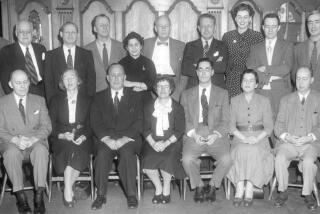Making Peace With Prozac : The doctor whose book opened a Pandora’s box of questions about the potent pill still prescribes it. He also prescribes caution.
- Share via
PROVIDENCE, R.I. — As a psychiatrist, Dr. Peter D. Kramer writes, he had become accustomed to watching personalities change slowly.
But when a bold new antidepressant medication, Prozac, came into use a little more than five years ago, Kramer was bowled over. Personality transformations among his patients seemed to be taking place almost instantly, like magic.
Equally astonishing to Kramer was the extent of the metamorphoses. After a brief treatment with Prozac, one patient pronounced himself “better than well.” Tess, as Kramer has named the first patient he treated with Prozac, demanded to be returned to the drug after Kramer weaned her off it. She was in love with the changes it had wrought in her, and without the medication, pleaded, “I am not myself.”
That chilling statement rang in Kramer’s ears. Who had Tess been for all those years before Prozac, if not herself? Just what were the implications of the dramatic personality make-overs among patients on this medication, Kramer mused. What was constant in the “self” of Tess and others, and what was mutable? If our culture rewards certain personality traits--charisma, assertiveness, flexibility--was it appropriate to attain those qualities through what Kramer was now thinking of as “cosmetic psychopharmacology”?
With such questions gnawing at him, Kramer wondered just what he was hearing during office hours. Were his patients speaking to him in such newly confident tones--or was it their medication?
The result of Kramer’s cogitation was “Listening to Prozac,” a book that stunned its author and its publisher, Viking, when it leaped onto bestseller lists upon publication six months ago--and steadfastly refused to budge ever since. Kramer secretly rejoiced when the book garnered a six-figure advance, but he felt certain that it would never earn back that amount. But after a cautious initial shipping of just 14,000 copies, Viking has returned for more than a dozen printings. Close to 250,000 hardcover copies of “Listening to Prozac” have been printed.
“Listening to Prozac” is a challenging read. Its steady upward trajectory, achieved without a publicity blitzkrieg, is unusual for a book of its kind. “Listening to Prozac” did not vault Kramer onto “Oprah” or “Donahue,” but its sales suggest, in the words of Kramer’s editor, Nan Graham, that “it is consoling to people who are on the drug and informative to those who are not.”
Dr. Deborah Young, a psychiatrist/psychopharmacologist in Vista, near San Diego, praised Kramer for examining the nuances of Prozac and for shining a light on the phenomenon of a drug she likens to “a coat of Teflon” for human beings.
Low-level depression often seems connected to a high degree of personal overload, Young said. “So the drug probably has a timeliness that is fortuitous,” she said. “It fits with what is going on in our culture.”
At Viking, Graham said she approached Kramer’s book with a certain curiosity.
“I didn’t think I knew anything about this drug, and I didn’t think I knew anyone who was on it,” she said. “Then of course I started talking about it, and I realized this friend, that sister, this colleague--people all around me were taking it. I was completely surrounded by Prozac, and I didn’t know it.”
Taking antidepressant medication thus turns out to be not only widely pervasive--between 4 and 5 million Americans have consumed Prozac--but also highly private.
“A lot of people I know feel it’s like they’re making a confession if they say they are on Prozac,” said Dr. Robin Frasier, a Los Angeles psychiatrist who uses the drug in her practice.
Frasier, on the faculty at UCLA School of Medicine, believes that some of this sense of secrecy stems from the fact that “the idea of people being on an antidepressant is very mysterious. You think you have to be sick, you have to be really crazy to be taking a drug--then people read this book, and they find out they don’t have to be so crazy after all.”
*
Susanna Kaysen, whose memoir “Girl, Interrupted” was also a surprise bestseller this year, believes that those factors account for the success of books like hers and Kramer’s.
“Whether you are taking Prozac or you have been in a loony bin”--Kaysen’s book describes her treatment in a mental institution during adolescence--”these are not things you want to discuss with everyone,” she said.
“For readers of both books, these are ways to have a conversation about things that are very important to them without really having to have a conversation.”
Still, it was Kramer who let the Prozac genie out of the conversational bottle--who said, in effect: This stuff is all around us, and its ramifications are remarkable.
Kramer offers no instructions, no handy how-to checklist for Prozac. He thinks of himself as an explorer on the subject, and in fact acts as a sort of tour guide through Neurochemistryland. He poses questions that are at least as philosophical as they are pharmacological.
And while he neither outright advocates nor opposes the use of Prozac or its more recent derivatives, it was Kramer who flashed the caution signal, who asked the toughest question of all about these new compounds: Are we approaching a point in our society when chemical realignment of personality will be as routine as changing the oil in a car?
*
Kramer insists that he is uncomfortable with his unofficial anointment as the oracle of antidepressants. To his occasional embarrassment, he finds that colleagues now treat him as a kind of guru.
“I’m not sure I have a message that is simple enough” to merit that kind of label, Kramer said. “And so I resist it.”
Kramer is 45 but looks so much younger that it is tempting to ask where he plans to go to medical school, not where he went. (The answer is Harvard.) A thick shock of dark hair persistently wanders onto his forehead, making him appear more boyish still. At home, in the Federalist era house he shares with his wife, health researcher Rachel Schwartz, and their three children, Kramer dresses in blue jeans and a corduroy shirt--not exactly standard guru-wear.
And he maintains that he was unprepared for the upending that took place in his own daily pace when “Listening to Prozac” was published.
Before the book came out, Kramer prided himself on balancing a caseload of private psychiatric patients with a busy teaching schedule at Brown University Medical School. He wrote a monthly column for his profession’s best-read journal. He eagerly spent time with his children, attending to such details as daughter Sarah’s broken cello string. By the end of each workday, all business calls had been returned. And by Friday afternoon, the week’s professional correspondence was neatly tied up.
But with the publication of the book, Kramer suddenly he became the object of “a disturbing amount” of phone calls and letters, “testimony and witness” to experiences on Prozac or its derivatives.
He probably should not have been so surprised, Kramer acknowledged. “But I’m a little dense on this score.”
But if Kramer has become an inadvertent star on the psychopharmacology circuit, so has Prozac. In the six months since Kramer’s book came out, four Prozac cartoons have appeared in the New Yorker--a sure sign of intellectual stardom in contemporary America. A Prozac joke was recently written out of a TV sitcom--too touchy a topic, network censors protested.
And Prozac has followed a true celebrity pathway--embraced, then shunned, then forgiven. Headlines first hailed the drug in 1988 as a miracle worker, custom-made for subclinical or “situational” depression--the kind of cosmic Angst that dogs so many men and women on any given day or week or month.
Within months, Prozac was blasted for allegedly provoking violent behavior, even suicide. With those reports debunked, Prozac has become such standard fare in psychiatric treatment that between 900,000 and 950,000 prescriptions for the drug are filled each month.
But its acceptance, Kramer contends, should not rule out reservations about what this drug really means. Prozac, he wrote, “highlights our culture’s preference” for certain personality traits, such as vivaciousness, confidence and resilience to “rejection sensitivity.”
*
Some women, pointing to these effects and to the fact that about twice as many women as men seek treatment for non-manic depression, have expressed concern about Prozac’s growing popularity.
They worry that if the drug is overprescribed, women may feel that they are being crammed into a cheerful and productive, chemically induced and socially approved personality cookie cutter.
“I don’t think this is a drug that makes people conformist, but the result of being on this drug is that it makes people conformist to a new stereotype of femininity,” Kramer said. “But that stereotype is itself assertive.”
In that sense, he wrote, these new antidepressants may be seen as “feminist drugs, liberating and empowering.”
In truth, said Kramer, “there are all kinds of possibilities” with these drugs, “all kinds of visions of what the possibilities are or should be.”
But Kramer, who says he has never taken an antidepressant, is not about to see Prozac or its derivatives turned into some 1990s version of a recreational drug. This is strong medicine, he points out, not Halloween candy.
To the theoretical patient who appears at his doorstep demanding a prescription for Prozac, Kramer retorts: “I’m the wrong person to come to for an easy handout. I think that would be like going to a surgeon and saying, ‘Look, I want to have this operation, and use that anesthetic, and I want you to make that kind of incision.’ I wouldn’t even take such a request at face value.”
*
Often Kramer prescribes Prozac on a short-term basis, to guide a patient through an especially rocky period. Sometimes, he said, “people are scared about going off afterward.”
And when a patient, such as Tess, asks to return to the medication, Kramer studies the situation.
In Tess’ case, Kramer said yes and restored his patient to a low dose of Prozac. But when Sam, an architect, announced that he liked the “self” he discovered on Prozac better than the pre-Prozac model, Kramer said no. (Sam, however, outsmarted Kramer and got a new prescription for the drug from a different physician.)
In Kramer’s view, the drug, finally, “is just another tool--but it is a very powerful tool.”
Moreover, he adds: “It is not for everyone. It is one of those tools where you just don’t know what is going to come out at the other end.”
An Excerpt
“But I wondered whether we were ready for ‘cosmetic psychopharmacology’. . . . Since you only live once, why not do it as a blonde? Why not as a peppy blonde? Now that questions of personality and social stance have entered the arena of medication, we as a society will have to decide how comfortable we are with using chemicals to modify personality in useful, attractive ways.”
--From “Listening to Prozac: A Psychiatrist Explores Antidepressant Drugs and the Remaking of the Self” by Dr. Peter D. Kramer
More to Read
Sign up for our Book Club newsletter
Get the latest news, events and more from the Los Angeles Times Book Club, and help us get L.A. reading and talking.
You may occasionally receive promotional content from the Los Angeles Times.








